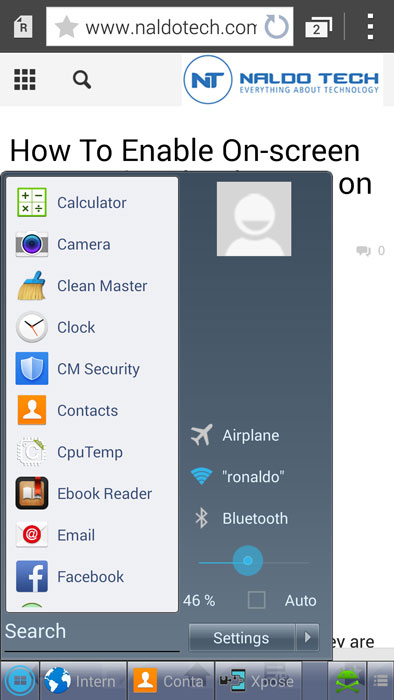

The problem is that this "launcher" is in a very primal state and is not ready to generate that user experience that we are used to.Īnd this is where the Taskbar developer's ability comes in by replacing the default launcher on the external screen with their own.
#TASKBAR FOR ANDROID ANDROID#
Now when an Android device with support for external displays is connected to a, this Secondary Launcher activity is displayed on the connected screen.
#TASKBAR FOR ANDROID SERIES#
With these apps you can put that grunt to good use and perhaps even leave that laptop at home as you move from one monitor to the next.To understand a little how you can activate that kind of experience We must know that in Android 10 the guys from Google included a secondary launcher activity to Launcher3, the AOSP launcher app from which applications such as Google's Pixel Launcher and another series of third-party launchers derive. With flagship Android phones now packing as much processing power as a typical work laptop, it seems a shame to waste it all on Instagram and Twitter browsing. For most of us, this is just a curiosity right now, but hopefully something like MaruOS will become the norm for all Android devices at some point in the future. MaruOS represents an extreme approach to getting your phone to work as a desktop, but it might also be the most reliable and elegant way to do it.

For example, “star2LTE” refers to the Exynos-equipped S9+ phones. Pay attention to the internal condenames here. These are the devices you can load MaruOS on at the time of writing: It’s based on Android Oreo and seamlessly shifts from being a mobile OS to being a desktop one.

Yes, MaruOS actually replaces the entire operating system, it isn’t an OS within and OS or simply an app with a desktop UI. It’s a gorgeous, lightweight operating system for smartphones. However, Maru is worth bookmarking and keeping an eye on. These aren’t even particularly popular phone models, so chances are you don’t have one of these. The first thing you should know about Maru OS is that it only works on a very small number of devices right now. It is definitely not for everyone, but incredibly impressive nonetheless. The paid-for premium version comes with dedicated support as well, which might matter to you if this becomes a mission-critical application. It’s a kludge that works just fine, but it’s a kludge nonetheless.ĪndroNix does have an amazing community, lots of documentation and developers who really seem to be on the ball with support requests. For example, you access your Linux instance by using VNC, a remote desktop client. The instructions are clear and there’s plenty of documentation, but they’ve had to work around the limitations of Android here. That’s without the need for rooting, but it does take some elbow grease to get it all going.Īndronix is really more a collection of step-wise scripts that you copy into a terminal app. Yes, this app allows you to run a Linux installation on your Android phone. While Leena and Sentio offer a desktop front-end for your Android phone, AndroNix goes further by adding an entire extra operating system to your phone. Sentio is certainly plenty ambitious and if you don’t have a DeX-capable phone, (or even if you do!) it’s certainly worth a try. Not that big a deal if you haven’t invested in the SuperBook hardware, so it is worth trying the app out before considering that. Looking through user reviews it seems that, while it runs perfectly for many, some users get crashes or other niggles on their particular handsets.

Then again, since Sentio will run on any Android device, stability will inevitably suffer. As a whole, Sentio Desktop seems to be a real competitor to Samsung DeX, just without the hardware restriction. It also sports a traditional start menu, a taskbar with system tray and a notification center.
#TASKBAR FOR ANDROID WINDOWS#
It allows for apps to be resized, resolution changes, multi-window apps and everything you’d generally expect from a Windows or Linux desktop UI, Sentio really seems to have thought it through when it comes to which desktop features are really important for day-to-day work.


 0 kommentar(er)
0 kommentar(er)
